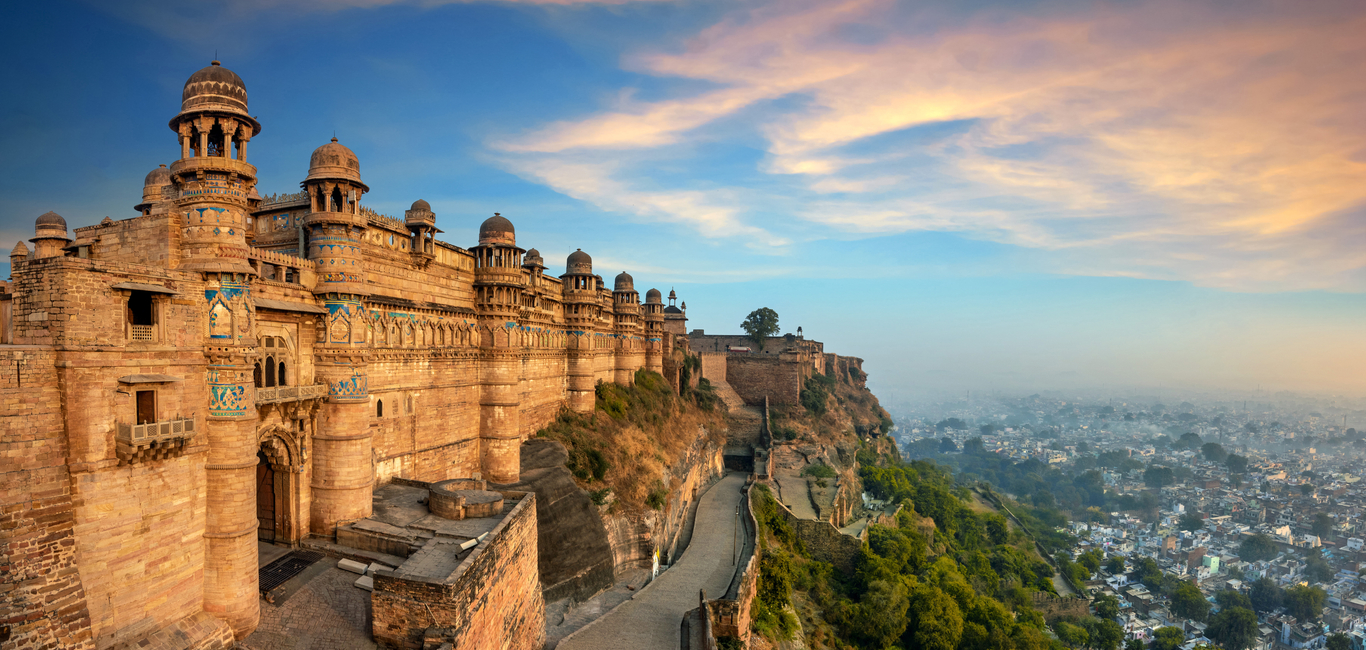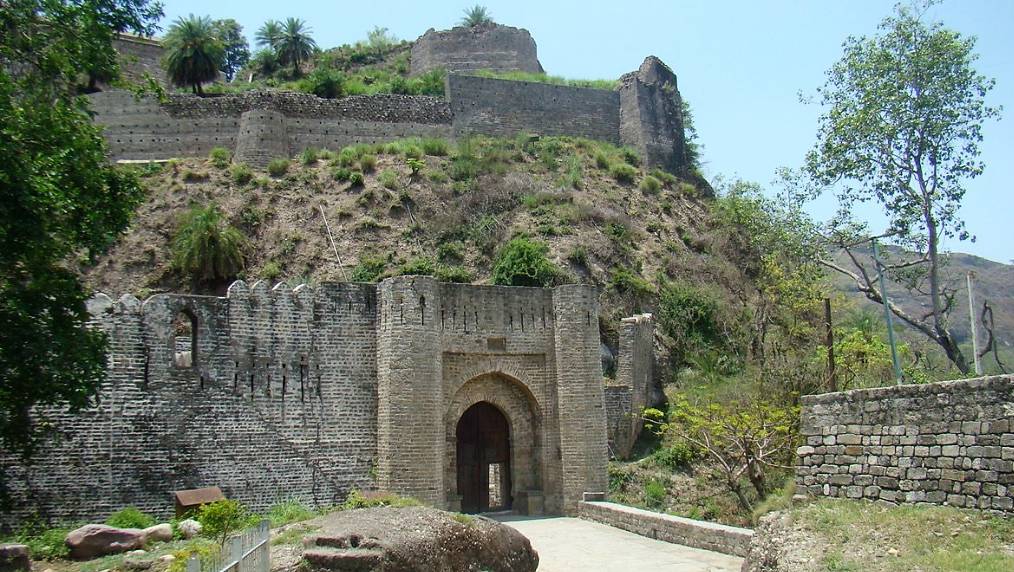Majestic Mysore, the city of palaces and parks is the ‘cultural capital’ of Karnataka. The historical town has legendary origins and its name is said to be derived from the word Mahishasurana Ooru”, which means the town of Mahishasura. According to a mythological legend, Mahishasura, the demon king, once lived here and was killed by Goddess Chamundeshwari. The Ganga kings ruled here till 10th century and were succeeded by the Cholas, Hoysalas and the Vijayanagar kings. Mysore became the glorious capital of the Wodeyar’s, feudatories of the Vijayanagar Empire, who declared independence in the 16th century with the decline of the Vijayanagar empire. The Wodeyar rule was disrupted for some time when Hyder Ali took over the reins of Mysore in 1765. His son Tipu Sultan developed the kingdom rapidly but was defeated by the British in 1799, and Mysore was given back to the Wodeyar’s.
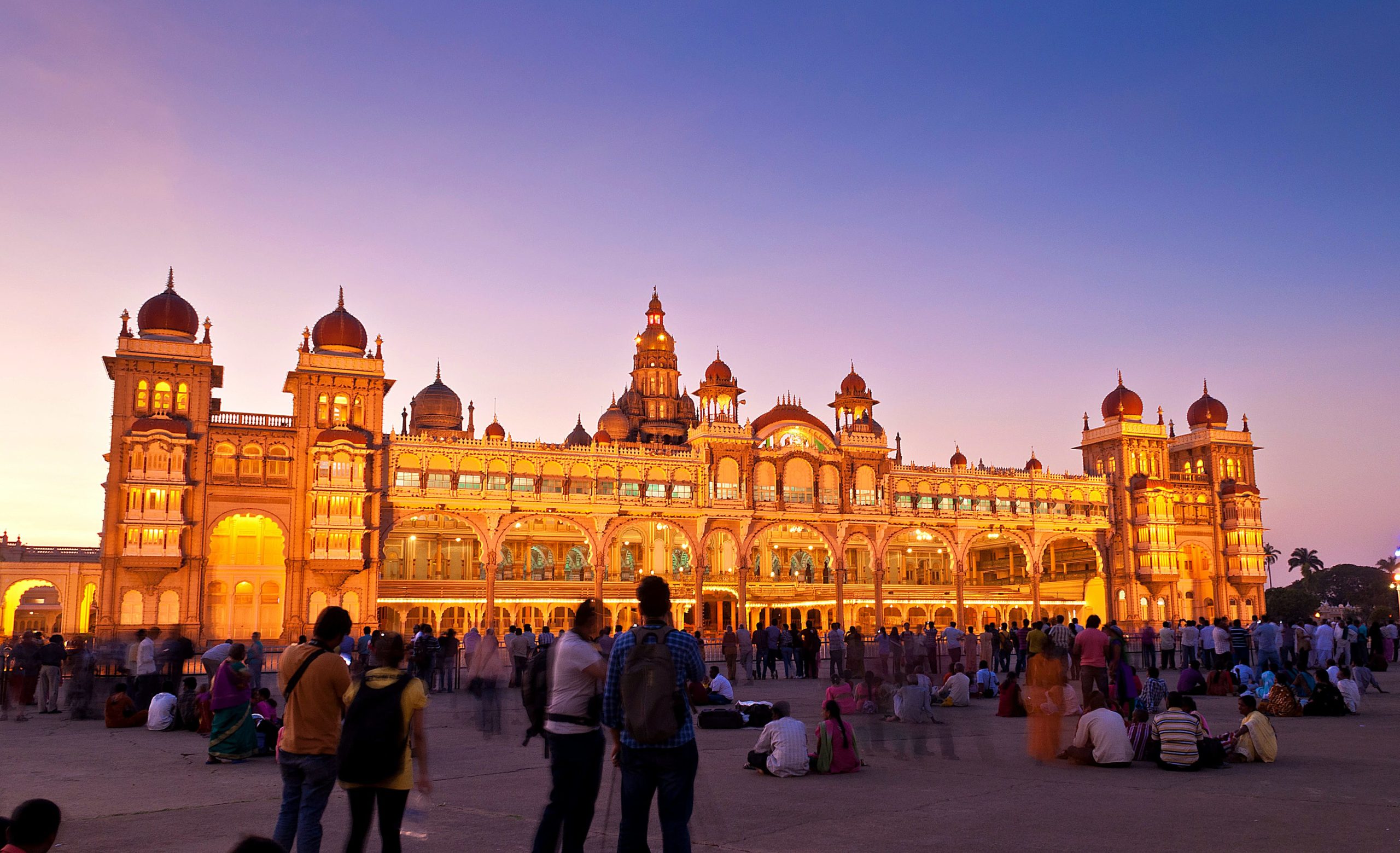 Mysore Palace: This magnificent three-storeyed palace in the heart of the town was built between 1897 1912 on the foundation of an old palace that was partially destroyed in a fire in 1897. The palace has splendid square towers at cardinal points, crowned with domes. The main attractions are – ‘Durbar Hall’ with its ornate ceiling and sculpted pillars and the Kalyanamandapam (Marriage Pavilion), noted for its chandeliers, cast-iron pillars, Belgian stained glass arranged in peacock designs in the domed ceilings and glazed tiled flooring. The palace is also known for its rich collection of priceless articles like a golden howdah (elephant seat), fine paintings, and a 200 kg. gold throne encrusted with precious stones. About 97,000 electric bulbs light up the palace in the evenings on Sunday, Public Holidays and during the Dassara celebrations.
Mysore Palace: This magnificent three-storeyed palace in the heart of the town was built between 1897 1912 on the foundation of an old palace that was partially destroyed in a fire in 1897. The palace has splendid square towers at cardinal points, crowned with domes. The main attractions are – ‘Durbar Hall’ with its ornate ceiling and sculpted pillars and the Kalyanamandapam (Marriage Pavilion), noted for its chandeliers, cast-iron pillars, Belgian stained glass arranged in peacock designs in the domed ceilings and glazed tiled flooring. The palace is also known for its rich collection of priceless articles like a golden howdah (elephant seat), fine paintings, and a 200 kg. gold throne encrusted with precious stones. About 97,000 electric bulbs light up the palace in the evenings on Sunday, Public Holidays and during the Dassara celebrations.
Sri Jayachamarajendra Art Gallery: The art gallery is housed in the Jaganmohan Palace, one of the most beautiful buildings of Mysore. A museum established here in 1915, has a fine collection of ceramics, sandalwood, ivory, stone, antique furniture, and ancient musical instruments. It also treasures valuable art collection like traditional Mysore gold leaf paintings and paintings of renowned artists like Travancore ruler, Raja Ravi Varma, and the Russian painter Svetoslav Roerich, etc.
Rail Museum: It exhibits locomotives and coaches of the erstwhile royal family of Mysore. There are also paintings and photographs describing the story of the railways.
Folklore Museum: The museum at Jayalakshmi Vilas mansion has a rich collection of over 6500 folklore articles and is perhaps the biggest of its kind in Asia.
Mysore Zoo or Sri Jayachamrajendra Zoological Gardens: It was set up in 1892, during the rule of Chamrajendra Wodeyar.
St. Philomena’s Cathedral: The imposing twin-towered Gothic structure with beautiful stained glass windows.
Around Mysore
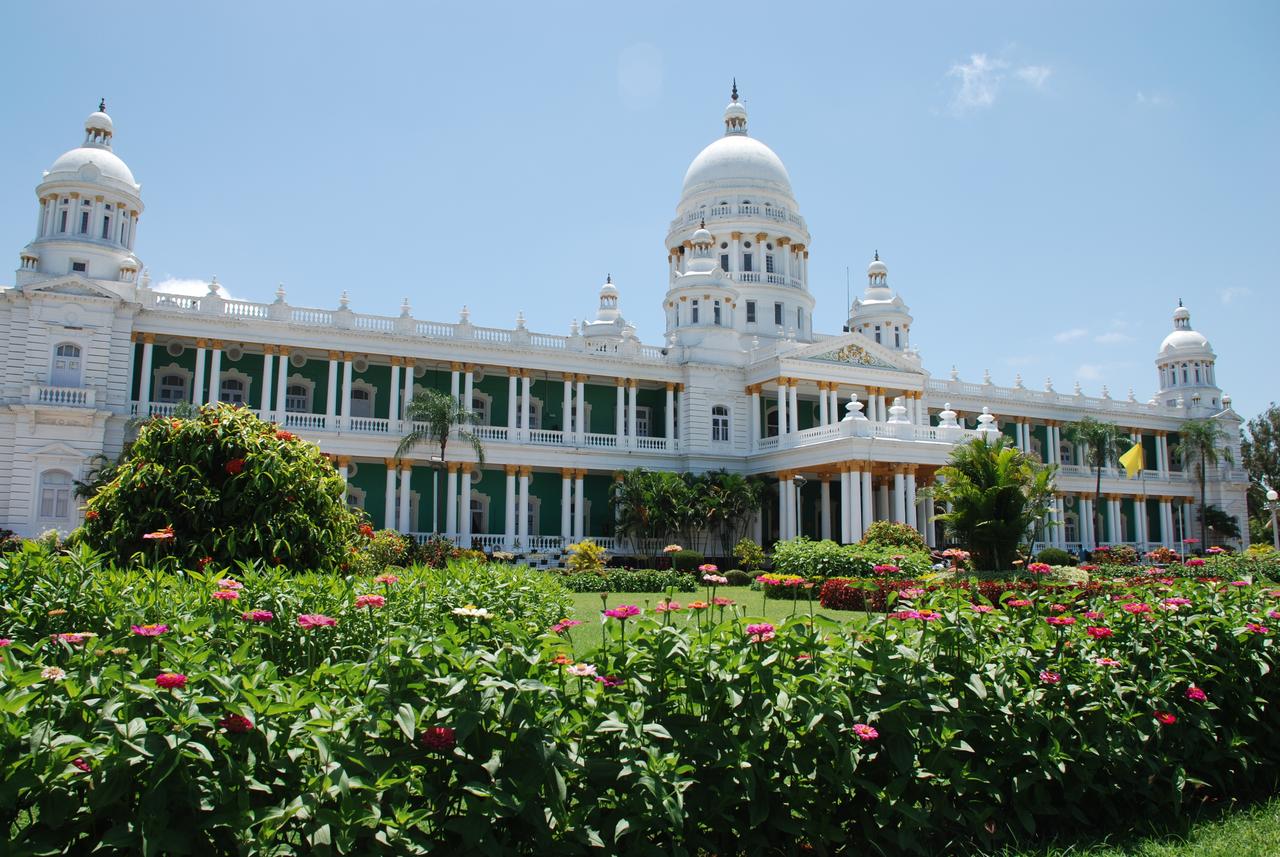 Lalitha Mahal Palace (9 kms.)
Lalitha Mahal Palace (9 kms.)
The charming white colored double storeyed palace was built by Maharaja Krishnaraja Wodeyar in 1931, to accommodate the royal guests from overseas and has now been converted into a luxurious heritage hotel.
Chamundi Hill (13 kms.)
The Chamundeswari Temple perched atop the hill is believed to be 2,000 years old, but the present structure dates back to the 11th century. It is dedicated to Goddess Chamundi, the patron deity of the Wodeyar’s. On the halfway up there is a 4.8-meter tall monolith of ‘Nandi’, the bull, carved out of a single black rock. There is also a gigantic statue of Mahishasura atop the hill, who was vanquished in the battle by Goddess Chamundi.
Brindavan Gardens & Krishnarajasagar Dam (19 kms.)
The massive dam near the confluence of Kaveri, Hemavathi and Lakshamanatirtha rivers was designed and constructed by the famous architect M. Vishveswaraya in 1932, during the reign of Maharaja Krishnaraja Wodeyar IV. The dam is about 2621 meters long and 39 meters high, while the reservoir covers an area of 130 sq. kms. The beautiful terraced Brindavan Gardens, built at the foot of the dam is famous for its illumination and musical water fountains. The well – lit gardens in the evenings look like a fairyland.
Ranganathittu Bird Sanctuary (16 kms.)
It has a rich variety of water birds like a cormorant, egrets, and spoonbills, etc., but the sanctuary is mainly known for herons, who visit the islands for nesting and breeding. Their chicks are generally hatched in July and August. Best season- May to Nov.
Srirangapattana (16 kms.)
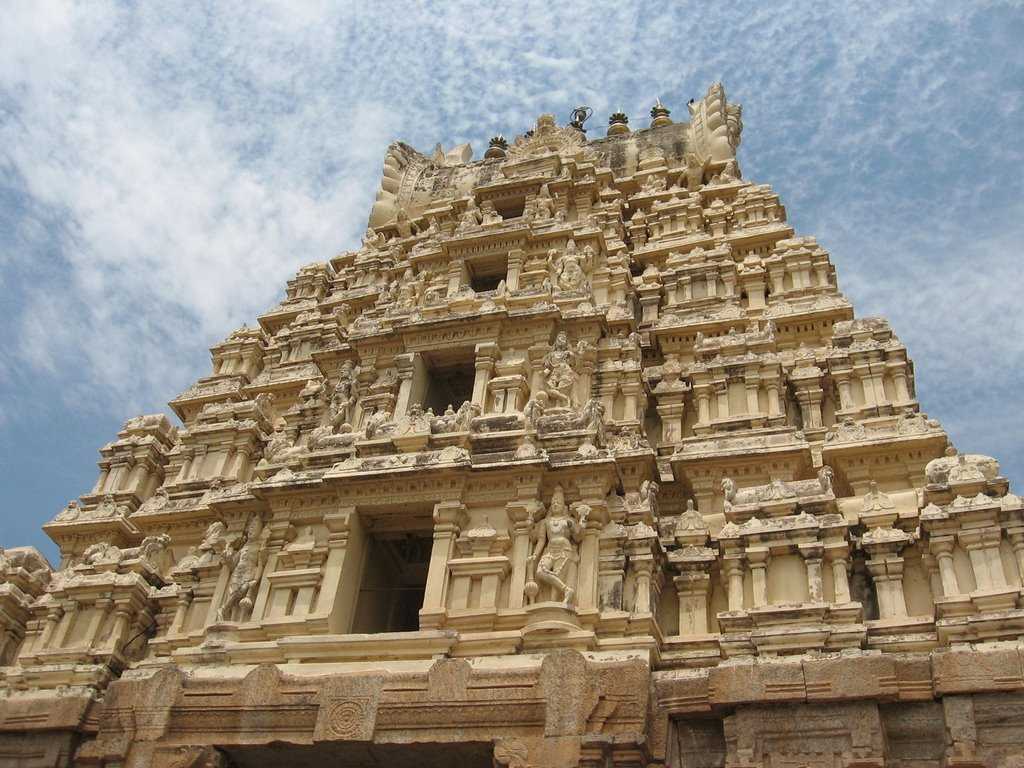 The 18th-century island capital of Haider Ali and his son Tipu Sultan is flanked by two branches of river Kaveri. The battle-scarred ramparts of the fort reflect the heroics of Tipu, who valiantly fought the British and delayed their hegemony over Mysore. Within the fort is a mosque and the magnificent Ranganatha-Swamy temple, dating back to the 9th century, and evidence of Tipu. Tipu Sultan’s summer palace, Daria Daulatbagh, and his mausoleum are located outside the fort. The palace is noted for its gilded wall panels, ornate arches, and 18th-century frescoes.
The 18th-century island capital of Haider Ali and his son Tipu Sultan is flanked by two branches of river Kaveri. The battle-scarred ramparts of the fort reflect the heroics of Tipu, who valiantly fought the British and delayed their hegemony over Mysore. Within the fort is a mosque and the magnificent Ranganatha-Swamy temple, dating back to the 9th century, and evidence of Tipu. Tipu Sultan’s summer palace, Daria Daulatbagh, and his mausoleum are located outside the fort. The palace is noted for its gilded wall panels, ornate arches, and 18th-century frescoes.
Somnathpur (35 kms.)
Sacred Somnathpur is one of the three jewels of Hoysala temple architecture, the other two are Belur and Halebid. The Prassana Chennakesava Temple here was built in 1268, during the reign of King Narasimha III, at the instance of his minister Somanatha Dandanayaka. Like other Hoysala shrines, it is set on a raised plinth with a star-shaped ground plan, but unlike the Belur and Halebid temples, it was completed. The temple complex has a triple shrine (trikutachala), each with its own stunningly beautiful vimana and sukhanasi (vestibule) and a spacious common navaranga mandapa. The outer walls are exquisitely carved narrating episodes from Ramayana, Mahabharta, and Bhagavata.
Kabani River Lodge (80 kms.)
The jungle resort on the eastern fringes of famous Nagarhole Sanctuary has emerged as a popular tourist destination. The lush forest along the Kabani river teems with wildlife and birds and is a nature lover’s paradise.
Talakkad (45 kms.)
This historic and religious center on the left bank of Kaveri was the capital of Gangas from the 5th to 10th centuries. In 1116, Hoysala king Vishnuvardhana attacked Talakkad, under the Cholas and attained victory. To celebrate his victory, Vishnuvardhana built five temples dedicated to Lord Vishnu, one of them is the Kirtinarayan temple. Talakkad is also known for the five Shivalingas of the ‘Panch lingas’ enshrined in beautiful temples.
Sivasamudram (80 kms.)
The island town endowed with exceptional scenic beauty is 44 kms. from Mandya. It is famous for the two picturesque falls Gaganachukki and the Bharacukki created by the branches of river Kaveri. The Ranganatha and Someshwara Shiva temple are two important shrines of the island.
Melukote (48 kms.)
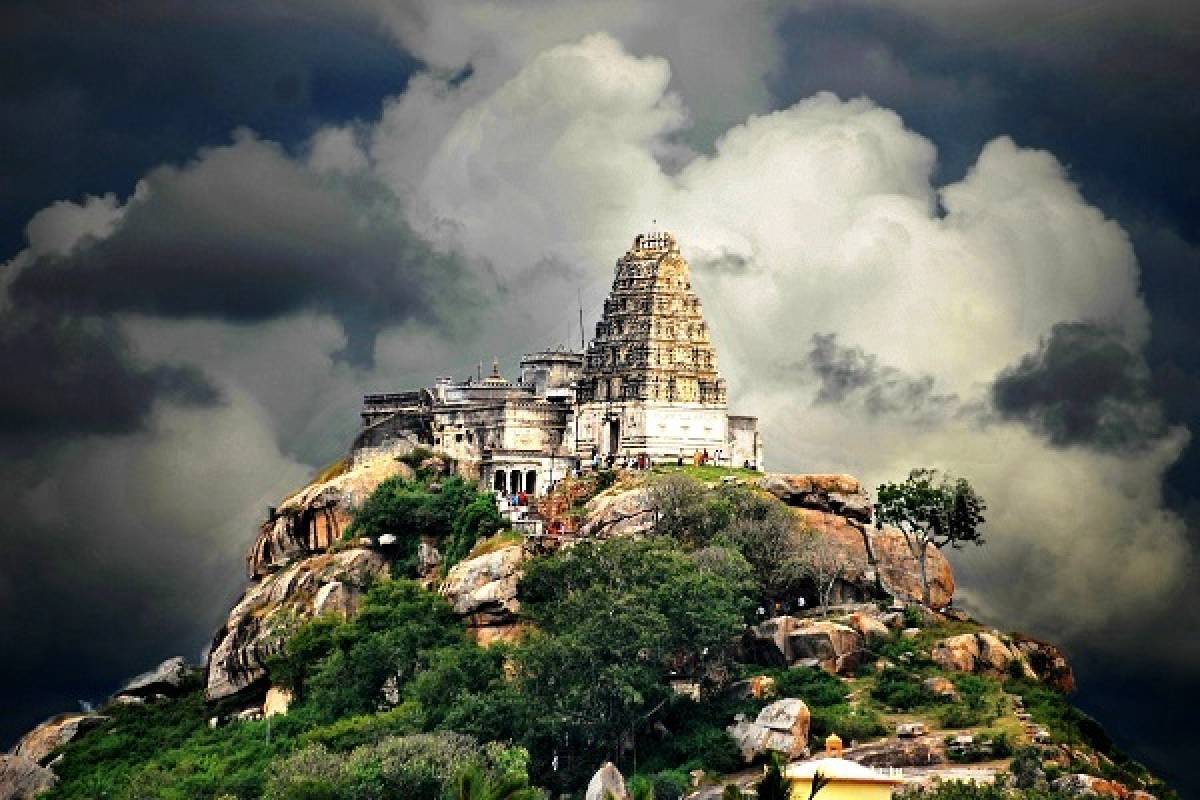 Melukote or the High Fort’ is well known for the Panchanarayana temples, the five shrines dedicated to Lord Vishnu and built by the Hoysala king Vishnuvardhana. The famous Cheluvarayaswami temple atop Yadavagiri hill enshrines a fine statue of Lord Vishnu, holding the Shanku (conch), Chakra (a disc-like weapon) and a Gadha (mace).
Melukote or the High Fort’ is well known for the Panchanarayana temples, the five shrines dedicated to Lord Vishnu and built by the Hoysala king Vishnuvardhana. The famous Cheluvarayaswami temple atop Yadavagiri hill enshrines a fine statue of Lord Vishnu, holding the Shanku (conch), Chakra (a disc-like weapon) and a Gadha (mace).
Billigiri Rangana (BR) Hills (90 kms.)
BRHills are a delight for wildlife, trekking and adventure sports enthusiasts. The terrain is dotted with peaks and hilltop temples. Billigiri Rangana Temple dedicated to Lord Rangaswamy is the most important shrine. The Ratha (chariot) festival is held here in April. Other places worth seeing are – Dodda Sampige Mara, the 2,000-year-old giant tree, and BRT Wildlife Sanctuary. Bandipur National Park (80 kms.) It sprawls in the foothills of the Nilgiris and is one of the finest wildlife centers in the country. The park was set-up in 1931, by the Mysore Maharajas and was brought under the ‘Project Tiger in 1974. It covers an area of 874.20 sq. kms., kms., adjoining the famous Mudumalai sanctuary in Tamil Nadu and Wayanad sanctuary in Kerala Tha lush forest full of teak, rosewood, honor, math, bamboo and sandal trees teems with elephant, tiger, leopard, panther, dhole (wild dog). bison spotted deer, sambar, crocodile, cobra, and python, etc. Birds like peafowl, partridge. quail, hornbill, ibis, eagle, etc. can be viewed here. Visitors can take a safari on an elephant back or hire a vehicle to go round the park. Well planned motorable roads close to the perennial and seasonal water points and adequate open spaces in the forest enables a better viewing. Best season – May to June and Sept. to Nov.


